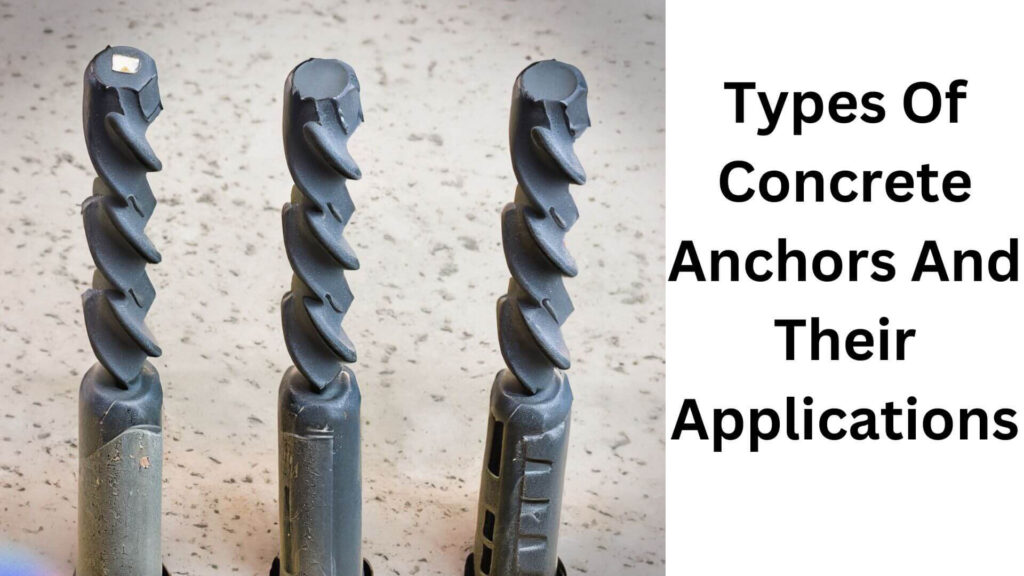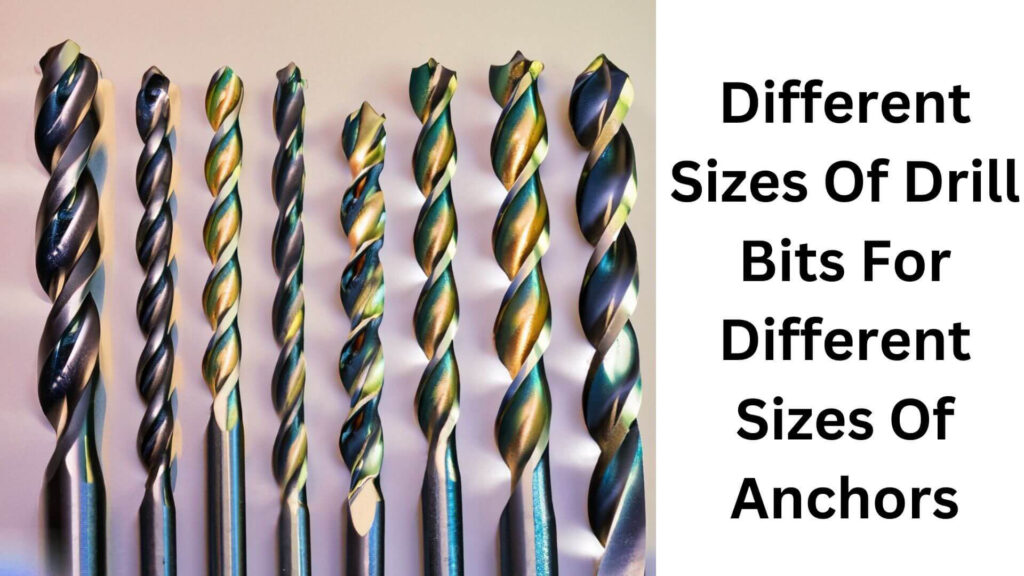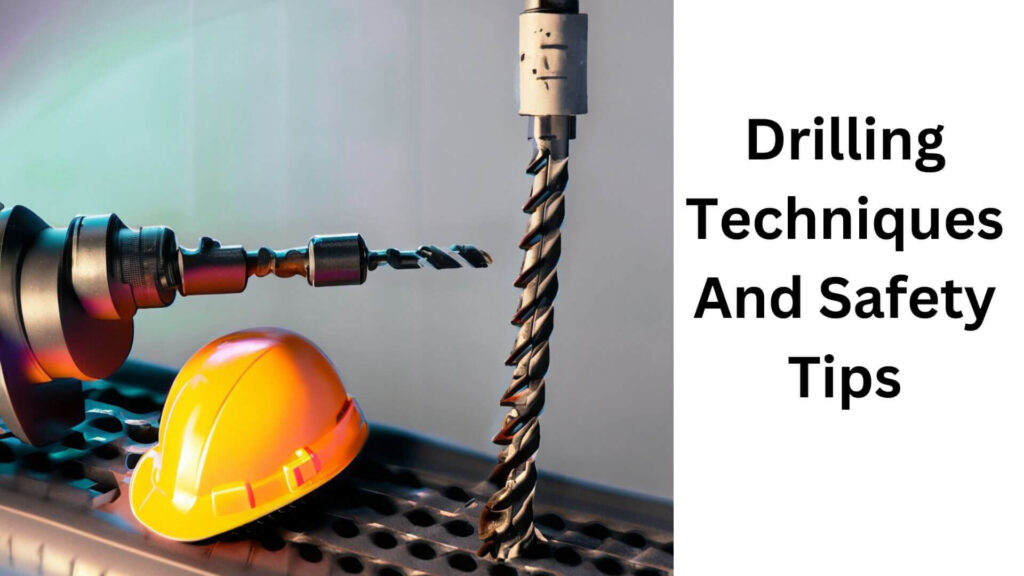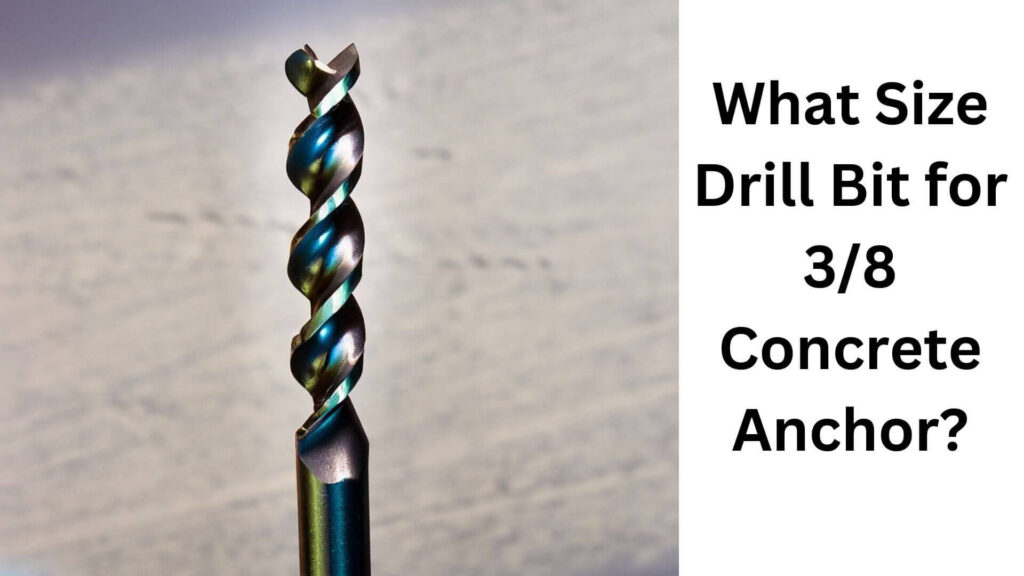Are you ready to tackle your concrete anchoring project but need clarification on what size drill bit for a 3/8 concrete anchor? don’t worry!
To drill a hole for a 3/8 concrete anchor, use a 5/16-inch drill bit. Using the correct size drill bit is essential when installing a concrete anchor.
Using the right size bit can prevent the anchor from fitting correctly or loosening over time, compromising the structural integrity of the installation.
Choosing the right drill bit ensures the anchor fits securely, allowing for a stable installation.
Additionally, it is essential to ensure the drill bit is sharp, as a dull bit can cause the drilling process to take longer and potentially damage the drilled surface.
Using the right drill bit and taking proper precautions can ensure a successful installation for your concrete anchor.
Table of Contents
Understanding The Basics Of Concrete Anchors
Concrete anchors are hardware components that bond structural materials to concrete by means of powerful adhesion. They’re widely used in construction, from building a new home to repairing a damaged building.
Concrete anchors provide a solid, dependable bond for various materials to guarantee their permanent attachment to the underlying concrete surface.
We will explore the different types of concrete anchors and what factors to consider before installing them.
Definition And Function Of Concrete Anchors
- Concrete anchors are hardware components that provide a sturdy grip on concrete surfaces.
- Concrete anchors come in many forms and can be made of a wide range of materials, including steel, plastic, and nylon.
- Concrete anchors provide a bond between concrete surfaces and other materials such as steel framing, wood, and fixtures by supplying a safe, dependable bond on which to mount them.
- Concrete anchors prevent materials from coming loose, shifting, or falling, which can lead to damage or even injury.
Types Of Concrete Anchors And Their Applications

There are many types of anchors available for use on concrete surfaces.
- Sleeve anchors: These anchors grip tightly against the sides of the hole they’re installed in and are often used for medium and heavy-duty applications such as equipment support, handrails, and awnings.
- Wedge anchors: Wedge anchors are ideal for heavy-duty applications such as attaching steel framing or pipe supports to concrete surfaces. They are suitable for use in applications where high tension or shear forces are expected.
- Concrete screws: These anchors use aggressive threads to grip the concrete surface, making them ideal for use on small to medium-sized objects. They typically attach electrical boxes, conduits, PVC pipe supports, and other small fixtures.
- Drop-in anchors: These anchors are ideal for use on concrete surfaces where the head can be located beneath the surface of the concrete. They are used for applications in which a flush finish is desirable, such as overhead applications.
- Expansion anchors: They grip the surrounding concrete tightly, making them ideal for medium-duty applications, such as installing light fixtures, conduits, or plumbing.
Read More: What Does a Concrete Drill Bit Look Like?
Factors To Consider Before Installing Concrete Anchors
Before installing concrete anchors, it is essential to consider several factors to ensure their proper installation.
- Verify that your anchor is appropriate for the underlying material and load capacity.
- Verify that the hole you’re drilling has the correct diameter and depth for the anchor you’re using.
- Check that the concrete you attach the anchor to is of the correct thickness, density, and quality to support the anchor and your intended load.
- Verify that the spacing of the anchors is adequate for the weight and size of the object being mounted.
- Follow the manufacturer’s instructions carefully during installation to ensure the anchor and total strength capacity are installed correctly.
It is essential to understand the basics of concrete anchors, the different types of anchors available, and the factors to consider before installing them.
By keeping these factors in mind, you’ll be able to select the appropriate anchor and install it correctly to ensure a safe, secure, and long-lasting attachment between your surface and the material being installed.
Check Also: The Ultimate Drill for Concrete Walls!
The Importance Of Choosing The Right Drill Bit Size
When it comes to drilling into concrete, selecting the appropriate drill bit size is crucial for the performance of your anchor. Using the correct size could lead to vital and potentially dangerous anchor installation.
How Drill Bit Size Affects Anchor Performance
The size of the drill bit correlates with the anchor’s overall performance. Using the wrong size can lead to an improper fit between the anchor and the hole, causing instability and reducing its load-bearing capacity.
- A drill bit too tiny will result in a loose anchor fit, causing damage and weak holding strength.
- A drill bit that’s too big can make it challenging to install the anchor, leading to excessive dust and, more importantly, poor holding strength.
Read More: Can a Concrete Bit Drill Through Tile?
Different Sizes Of Drill Bits For Different Sizes Of Anchors

Choosing the right drill bit size will depend on the anchor’s size. Each anchor has a pre-specified drill bit size, ensuring optimal fit and holding strength.
- 1/4″ anchor: 3/16″ drill bit
- 3/8″ anchor: 5/16″ drill bit
- 1/2″ anchor: 7/16″ drill bit
- 5/8″ anchor: 1/2″ drill bit
- 3/4″ anchor: 9/16″ drill bit
The Consequences Of Using The Wrong Drill Bit Size
Using the wrong drill bit size can lead to several issues that can compromise your anchor installation.
- Reduced holding strength
- Loose or unstable anchor
- Cracks and damage to the concrete surface
- Excessive dust and debris during installation
Using the correct drill bit size for your anchor is essential to avoid these issues. Choose the right size to ensure a secure, durable, and long-lasting installation.
Selecting the correct drill bit size is crucial for successfully installing your anchor. You’ll ensure optimal holding strength and improve safety with the right size. So, select the correct size for your project to provide the best results.
Read More: Are Titanium Drill Bits Good for Concrete?
How To Determine The Correct Drill Bit Size For 3/8 Inch Concrete Anchor
Do you have a DIY project that requires installation into concrete? If you’re working with 3/8 inch concrete anchors, one crucial question is: what size drill bit should I use? Determining the correct drill bit size is crucial for a successful installation.
Using three simple steps, I’ll show you how to determine the correct drill bit size for a 3/8-inch concrete anchor.
Step 1: Measuring The Diameter Of The Anchor
The first step is to measure the diameter of the anchor. Here’s a helpful tip: the diameter of the anchor refers to the broadest part of the threaded area, called the “shank”. Use a measuring tape or a caliper to measure the shank diameter accurately.
Once you have the measurement, write it down for the next step.
Step 2: Matching The Anchor Diameter To The Drill Bit Diameter
After you have measured the anchor’s diameter, it’s time to match it to the drill bit diameter. You want to use a drill bit the same size as the shank diameter of the anchor. For a 3/8-inch concrete anchor, you’ll need a 3/8-inch drill bit.
Step 3: Adjusting The Drill Bit Size For Optimal Performance
While matching the drill bit size to the anchor size is essential, you may need to adjust the drill bit size slightly to ensure optimal performance. One consideration is the type of concrete you’re drilling into. If it’s a more complex type of concrete, you may need to use a slightly larger drill bit.
On the other hand, if it’s softer concrete, a drill bit might be suitable. Another factor is the depth of the hole you’ll be drilling.
For example, if the anchor needs to be embedded deep into the concrete, you may need to use a more extended drill bit.
Remember, always double-check the manufacturer’s instructions and recommendations for both the anchor and drill bit sizes. Using the correct size could result in a sound installation, which could be dangerous and costly.
Now that you know how to determine the correct drill bit size for a 3/8-inch concrete anchor, you can confidently tackle your DIY projects. Happy drilling!
Read More: Is It Possible to Sharpen a Concrete Drill Bit?
Tips For Drilling Into Concrete For A 3/8 Inch Anchor
Concrete anchors are convenient and reliable for attaching objects to concrete surfaces. However, drilling holes into concrete can be challenging without the right tools, techniques, and safety precautions. In this section, I offer some tips for drilling into concrete for a 3/8-inch anchor.
Preparing The Concrete Surface
Before you start drilling, preparing the concrete surface adequately is essential.
- Clean the surface: Remove any dirt, debris, or loose material from the concrete surface where you plan to drill.
- Mark the spot: Use a pencil or marker to indicate where to drill. Ensure that the location is level and straight.
- Hammer the surface: To improve the concrete’s surface hardness and make it easier to drill, use a hammer to tap the area where you plan to make the hole.
Using The Right Drill And Drill Bit
Choosing the right drill and drill bit is crucial when drilling into concrete. A hammer drill is the best for this task as it can deliver high torque and rapid percussion to break and drill into the concrete surface.
- Use a masonry drill bit: Use a masonry drill bit that matches the size of the 3/8-inch concrete anchor. A high-quality carbide-tipped masonry drill bit is recommended for this application.
- Use drill bit lubrication: Spray drill bit lubrication or water onto the drill bit to reduce friction and wear, making it easier to drill.
- Control drill speed: Start drilling at a low rate and gradually increase the pace as the drill bit penetrates the concrete surface.
Drilling Techniques And Safety Tips

Drilling into concrete requires some drilling techniques and safety measures that you should follow.
- Wear safety gear: Use safety goggles, gloves, and a dust mask to protect yourself from flying debris and dust.
- Drill straight: Hold the drill level perpendicular to the surface; otherwise, the hole might end up crooked or at the wrong angle.
- Drill deep: Drill a hole more profound than the length of the anchor you plan to use. This will provide enough room for the anchor to fit in securely.
- Remove debris: Periodically remove waste from the hole while drilling so that the drill bit has maximum contact with the concrete.
- Test anchor placement: Test-fit the anchor in the hole to ensure that it fits securely and will support the weight of the object you plan to attach.
By following these tips, you can ensure that you drill a hole into the concrete surface to install a 3/8-inch anchor securely. Always follow all safety measures and manufacturer recommendations when handling tools and equipment.
Frequently Asked Questions For What Size Drill Bit For 3/8 Concrete Anchor?
What Is A 3/8 Concrete Anchor?
A 3/8 concrete anchor is a type of bolt used to fasten materials to concrete surfaces securely.
What Drill Size Do I Need For 3/8 Concrete Anchor?
You will need a 5/16″ drill bit to create a hole for a 3/8 concrete anchor.
How Deep Do I Drill For A 3/8 Concrete Anchor?
Drill the hole to a depth of at least 1/2 inch deeper than the length of the 3/8 concrete anchor.
How Much Weight Can A 3/8 Concrete Anchor Hold?
It depends on the type of anchor and the strength of the concrete. A 3/8 concrete anchor can hold about 200-500 pounds.
What Are The Different Types Of 3/8 Concrete Anchors?
The most common types of 3/8 concrete anchors are sleeve, wedge, and drop-in anchors. Choose one based on your needs.
Final Verdict
Finding the right size drill bit for 3/8 concrete anchors can seem daunting, but it is simple to accomplish with some knowledge and preparation.
By following the steps mentioned in this article, you can choose the right drill bit size for your anchor needs.
Firstly, consider the size of your anchor and then choose the correct size of the drill bit. Secondly, consider the type of material you are drilling into.
Lastly, use the correct drilling technique to get the best results and ensure the stability and safety of your project.
By taking these simple measures, you can be confident in your choice of drill bit and the safety of your installation.
Overall, choosing the right size drill bit is an essential part of ensuring the success of your project, and with the knowledge presented in this article, you can easily complete your task.

Hey, I am Shihab Uddin, I’m a huge fan of DIY crafts. My workshop is where I spend most of my spare time, and I’m always working on some project. To that end, I’d like to share some of my knowledge and experience with you in power tools, woodworking, and other specialized materials fabrication.
I will guide you with genuine knowledge that can assist you with deciding whether a drill is appropriate according to your requirements or not. If you want to find the best drill and know which type of drill is most suited for your needs, then I can guide you with my expertise. My passion lies in helping others find the correct products they need at an affordable price.


